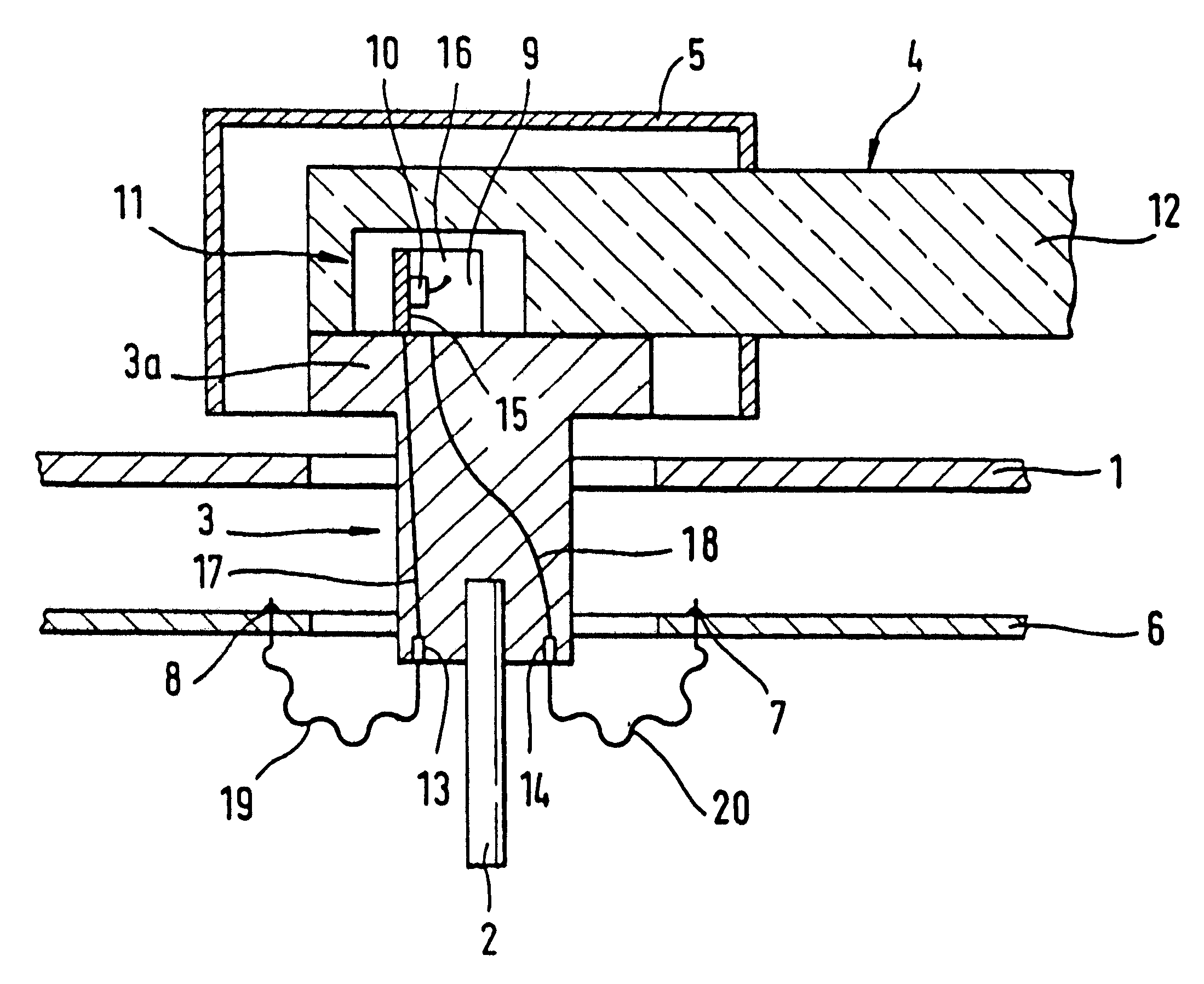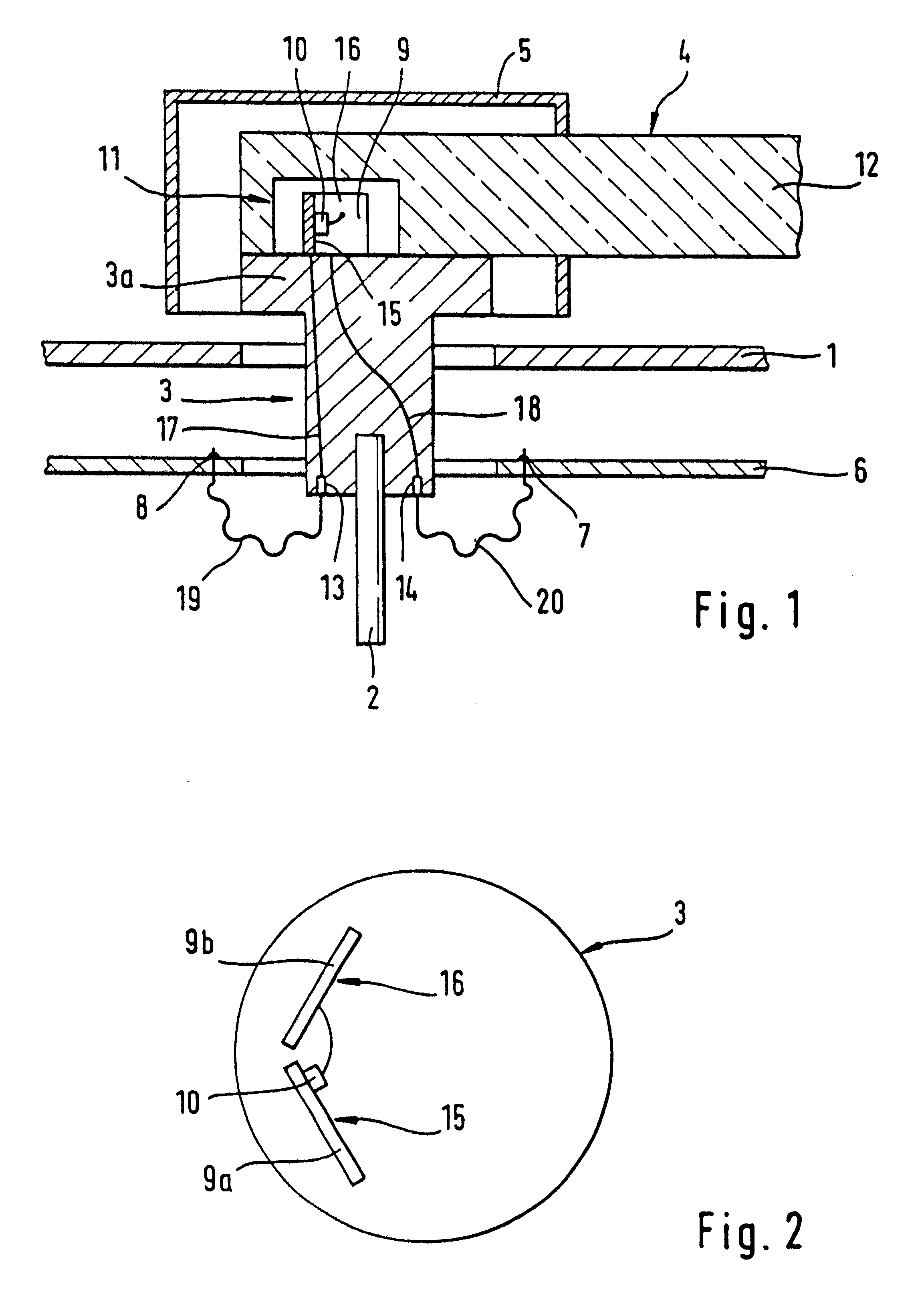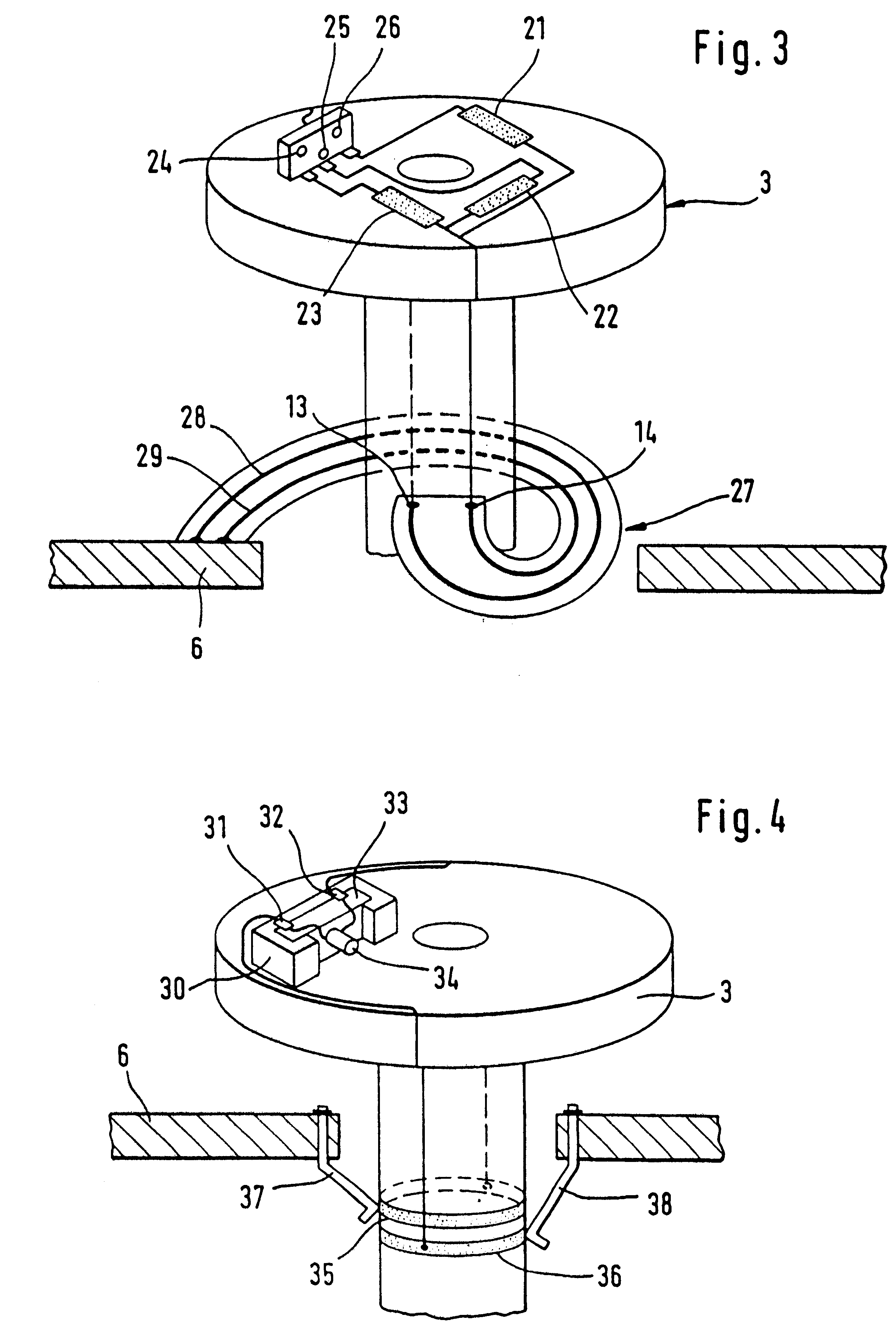Pointer instrument
a pointer instrument and carrier technology, applied in the direction of instruments, measurement device, measurement apparatus components, etc., can solve the problems of complicated production and assembly, affecting the functional reliability of the pointer instrument, and the sleeve and the carrier are connected
- Summary
- Abstract
- Description
- Claims
- Application Information
AI Technical Summary
Benefits of technology
Problems solved by technology
Method used
Image
Examples
Embodiment Construction
FIG. 1 shows a detail from a pointer instrument having a dial face 1, which is penetrated by a connecting sleeve 3 that is plugged onto a pointer shaft 2. Fastened to the connecting sleeve 3 is a pointer 4. The connecting sleeve 3 forms a carrier 3a at an end of the sleeve 3 facing the pointer 4. In the region of the connecting sleeve 3, the pointer 4 has a cap 5 made of an opaque material. Arranged underneath the dial face 1 is a circuit board 6 having contacts 7, 8 for a power supply. Located on the upper side of the connecting sleeve 3 is an upright reflector 9 having an illuminating means 10, these projecting into a recess 11 in the pointer 4. The reflector 9 and the illuminating means 10 are aligned such, that light radiated by them is radiated directly into a flag 12 of the pointer 4.
The connecting sleeve 3 is produced from nonconductive plastic and has conductors 17, 18 of conductive plastic which run continuously from connecting contacts 13, 14 on its underside to contact su...
PUM
 Login to View More
Login to View More Abstract
Description
Claims
Application Information
 Login to View More
Login to View More - R&D
- Intellectual Property
- Life Sciences
- Materials
- Tech Scout
- Unparalleled Data Quality
- Higher Quality Content
- 60% Fewer Hallucinations
Browse by: Latest US Patents, China's latest patents, Technical Efficacy Thesaurus, Application Domain, Technology Topic, Popular Technical Reports.
© 2025 PatSnap. All rights reserved.Legal|Privacy policy|Modern Slavery Act Transparency Statement|Sitemap|About US| Contact US: help@patsnap.com



